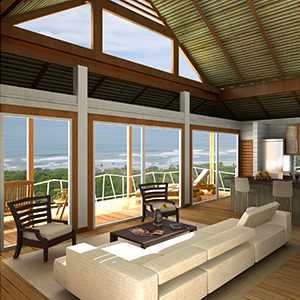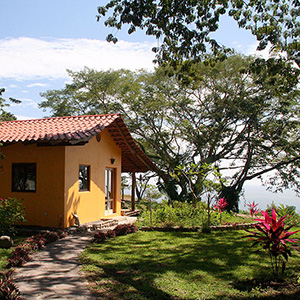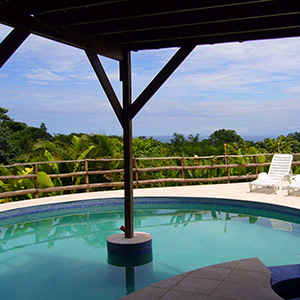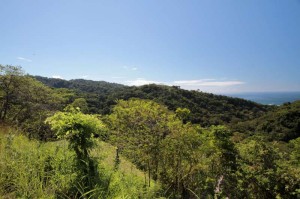A New Market: Real Estate & Carbon Trading
Tropisphere was happy to hear that Costa Rica intends to become the first carbon-neutral nation by nurturing its forests. In February 2007, Environment and Energy Minister Roberto Dobles said Costa Rica aims to reach this goal using budgeting, laws, and incentives, including measures to promote biofuels, hybrid vehicles, and clean energy. Another key component of the national strategy will be a “C-Neutral” label to certify that tourism and certain industrial practices mitigate all of the carbon dioxide they emit.
To augment the development of C-Neutrality, the country is cultivating a carbon certificate market that aims to not only boost carbon capture and storage in the nation’s forests, but also help maintain its scenic beauty.
Already this small country has been showing its appreciation of its ecosystems by actually paying landowners by the month to maintain forest on their properties. By using funds from diverse sources including proceeds from a tax on fuel, grants from international aid agencies, and even support from a beer company concerned about water quality, the government so far has disbursed more than US$100 million to landowners who’ve become forest stewards. In Costa Rica, these lands are commonly called “fincas de oxygeno”.
Still Costa Rica has huge privately owned Primary forest areas for sale. Most of the owners did not want to have their forests cut and resisted selling in the 90’s, when international logging companies invaded Costa Rica. These owners feel that now their time has come, and hope to sell their lands as carbon credits to International companies or environmental foundations. Tropisphere has sampled these properties, sharing the land owners’ hope to bring them into protective hands instead of to loggers or developers.
The Carbon Trading Real Estate market in Costa Rica is still not very developed. The reasons are the higher prices than in other latin American countries, where pasture land goes for less $/ha, whereas in Costa Rica deforested areas are much more expensive than Primary forest areas. For Costa Rican Farmers, deforested land was “worked” and is more valuable. Our primary goal is therefore to bring the primary forest areas and the “Oxygen Fincas” – already forested or reforested areas – under the “Carbon Credit” protection. Costa Rica’s asset is its stability, whereas many other Latin American countries are still struggling and are seen as less safe for a long-term investment.
The carbon-trading trend is controversial, primarily on grounds that firms will be encouraged to take the easy way out by buying what in essence are pollution permits instead of directly reducing pollution at the source. This is particularly troublesome at a time when scientists warn that the world must cut back fossil fuel emissions by no less than 70 percent to start turning things around.
Despite this very reasonable observation, Tropisphere considers Carbon Trading as an opportunity for Costa Rica. The country has strong bonds to its nature, and there is no better way to be rewarded for the turn of politics regarding the protection of its forestal heritage as a reaction to the sins of the early 90’s, when the country had one of the worst deforestation rates in Latin America. Costa Rica was once 99 percent forested, but forest cover has steadily diminished from 85 percent in 1940 to around 35 percent today according to the FAO’s State of the World’s Forests (FAO’s Forest Resources Assessment says the current cover is closer to 50 percent). Historically, clearing for agriculture (mostly coffee and bananas) and cattle pastures has been the largest contributor to Costa Rica’s rainforest destruction. During the 1970s and early 1980s, vast stretches of rainforest were burned and converted into cattle lands, but when the largest importer of Central American beef, the United States, ceased beef imports, Costa Rica was left with millions of acres of cleared land and a lot of cattle.
Costa Rica belongs to the Tropical Forest Mosaiclands, where forests and agriculture coexist. Degradation rates are high in these relatively densely populated areas-about 20 percent of Latin America’s mosaiclands
with trees were degraded in the 1990s. Because these forests are highly fragmented, they comprise biodiversity ‘hotspots’ where unique species are threatened with extinction. Also the protection of a small acreage
can make a huge difference for an entire region, for example, by offering a corridor for wildlife to migrate.
Already in 2004 the World Bank had mobilized a new fund of $53.8 million to demonstrate projects that sequester or conserve carbon in forest and agro-ecosystems. The Fund, a public/private initiative administered by the World Bank, aims to deliver cost-effective emission reductions, while promoting biodiversity conservation and poverty alleviation. Costa Rica already hosts one reforestation project supported by Bio Carbon Fund of the World Bank. Tropisphere would be happy to provide information about properties convenient for programs, which could be sponsored by the Bio Carbon Fund of the World Bank.
Information based on the following websites:
Oneworld net: Costa Rica Aims to Become First “Carbon Neutral” Country
Oneworld net: Climate Change guide
Mongabay: Rainforest in Costa Rica
Worldbank: Why global forest carbon finance is important for Latin America
Worldbank: About Bio Carbon Fund
Interested in sustainable development, green building and green construction? Click: Costa Rica Green Building















